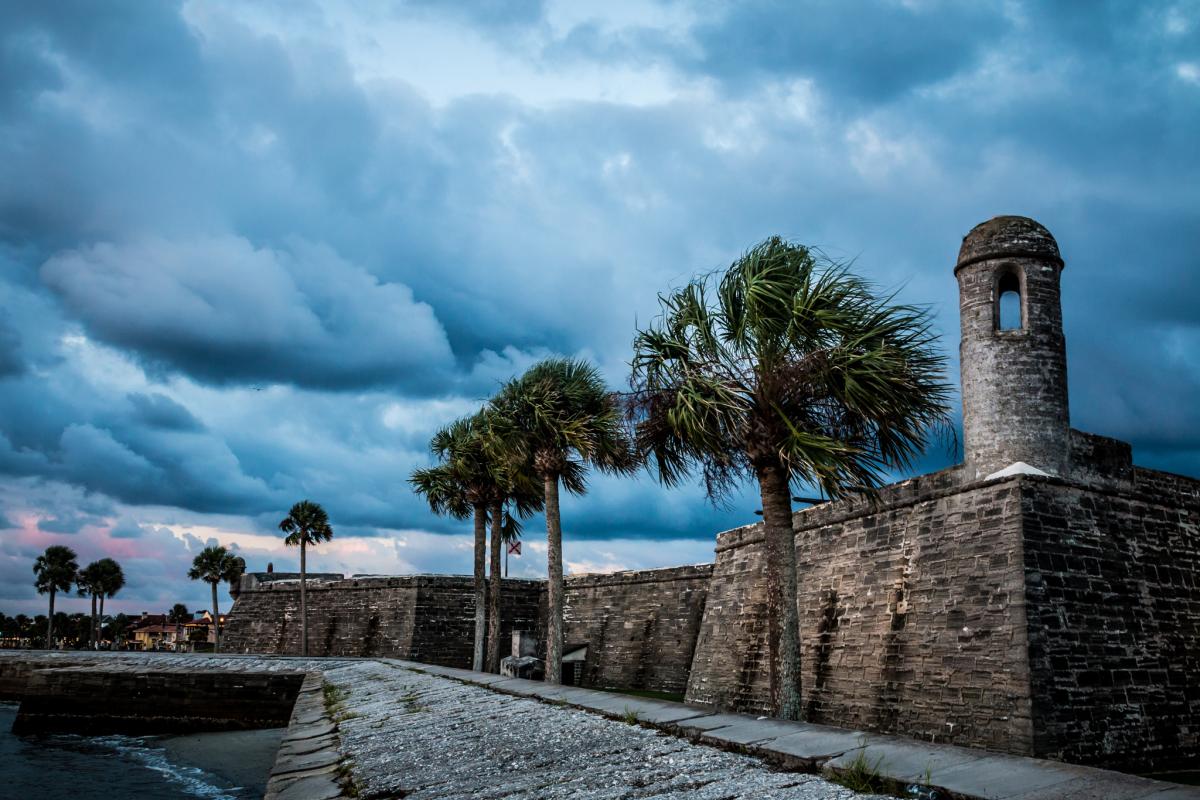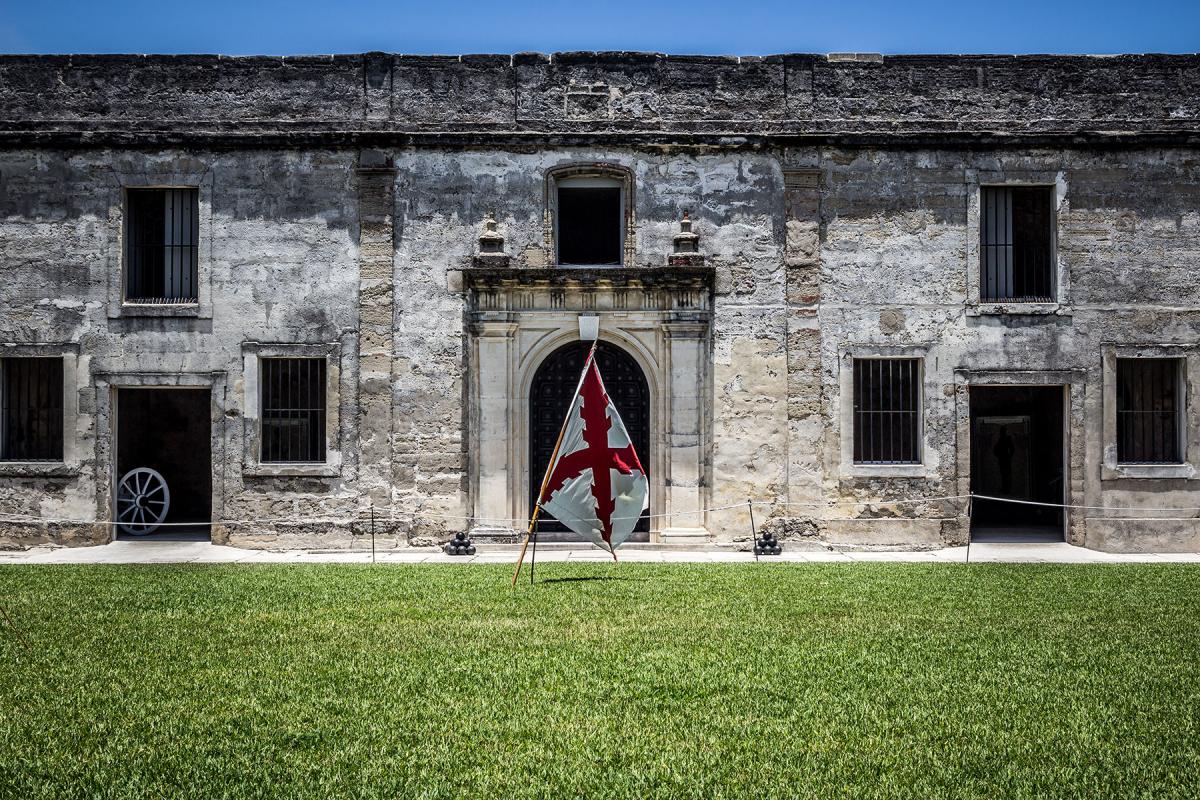The oldest masonry fort in the continental United States, t he Castillo de San Marcos is a large Spanish stone fortress built to protect and defend Spain’s claims in the New World. It’s a National Monument and, at over 315 years old, it’s the oldest structure in St. Augustine. It’s also one of the main attractions visitors to St. Augustine come to see.
he Castillo de San Marcos is a large Spanish stone fortress built to protect and defend Spain’s claims in the New World. It’s a National Monument and, at over 315 years old, it’s the oldest structure in St. Augustine. It’s also one of the main attractions visitors to St. Augustine come to see.

There’s plenty of things to do at the Castillo, from the numerous rooms that once housed soldiers and prisoners, to the large interior courtyard and gun deck which offers a great view of the city. Regular daily programs and ranger-led to urs are free with admission, as are cannon firings and weaponry demonstrations, which are offered (weather and staffing permitting) on Fridays, Saturdays and Sunday
urs are free with admission, as are cannon firings and weaponry demonstrations, which are offered (weather and staffing permitting) on Fridays, Saturdays and Sunday s at 10:30 a.m., 11:30 a.m., 1:30 p.m., 2:30 p.m. and 3:30 p.m. The Castillo is open every day of the year except Thanksgiving and Christmas Day.
s at 10:30 a.m., 11:30 a.m., 1:30 p.m., 2:30 p.m. and 3:30 p.m. The Castillo is open every day of the year except Thanksgiving and Christmas Day.
Passes to the Castillo may be purchased at the ticket booth on site (open from 8:45 a.m. to 4:45 p.m.) or online here. Special events and programs offered by the Castillo may have additional fees. Active military who present their military “CAC” Card are eligible for a free annual pass to all National Park Service areas which includes the Castillo de San Marcos. The card allows the military member and up to three other adult guests into the fort for free.
History
Construction began on the Castillo de San Marcos in 1672 and lasted 23 years, until 1695. Many Spanish forts preceded the Castillo, however, this one made of coquina was impenetrable to enemy attack and was fire resistant.
The fort came under fire for the first time in 1702. British forces, led by General Moore, burned the city but could not penetrate the Castillo’s walls. Subsequent attacks in 1728 and 1740 yielded similar results, and the British were never able to take the city of St. Augustine by force.
In 1763 however, Florida became a British colony with the signing of the Treaty of Paris, thus beginning a 20-year period of English rule. The Castillo was used as a military prison during the Revolutionary War, and at one time it held three signers of the Declaration of Independence within its walls.

At the end of the Revolutionary War, Florida was returned to Spain in 1784 until Florida became a United States Territory in 1821. The Americans called the Castillo Fort Marion, honoring the revolutionary patriot from the Carolinas, General Frances Marion. The U.S. Government used Fort Marion as a prison for Native Americans in the late 1800s. Natives from both Florida and the Great Plains were held at the fort during this time.
The fort was officially taken off the active list of fortifications in 1900 and it was preserved and recognized as a National Monument in 1924. Congress renamed the fort in 1942, reverting to the Spanish name, the Castillo de San Marcos. At over 315 years old, the fort is a lasting landmark of seventeenth-century St. Augustine.
https://www.visitstaugustine.com/thing-to-do/castillo-de-san-marcos
